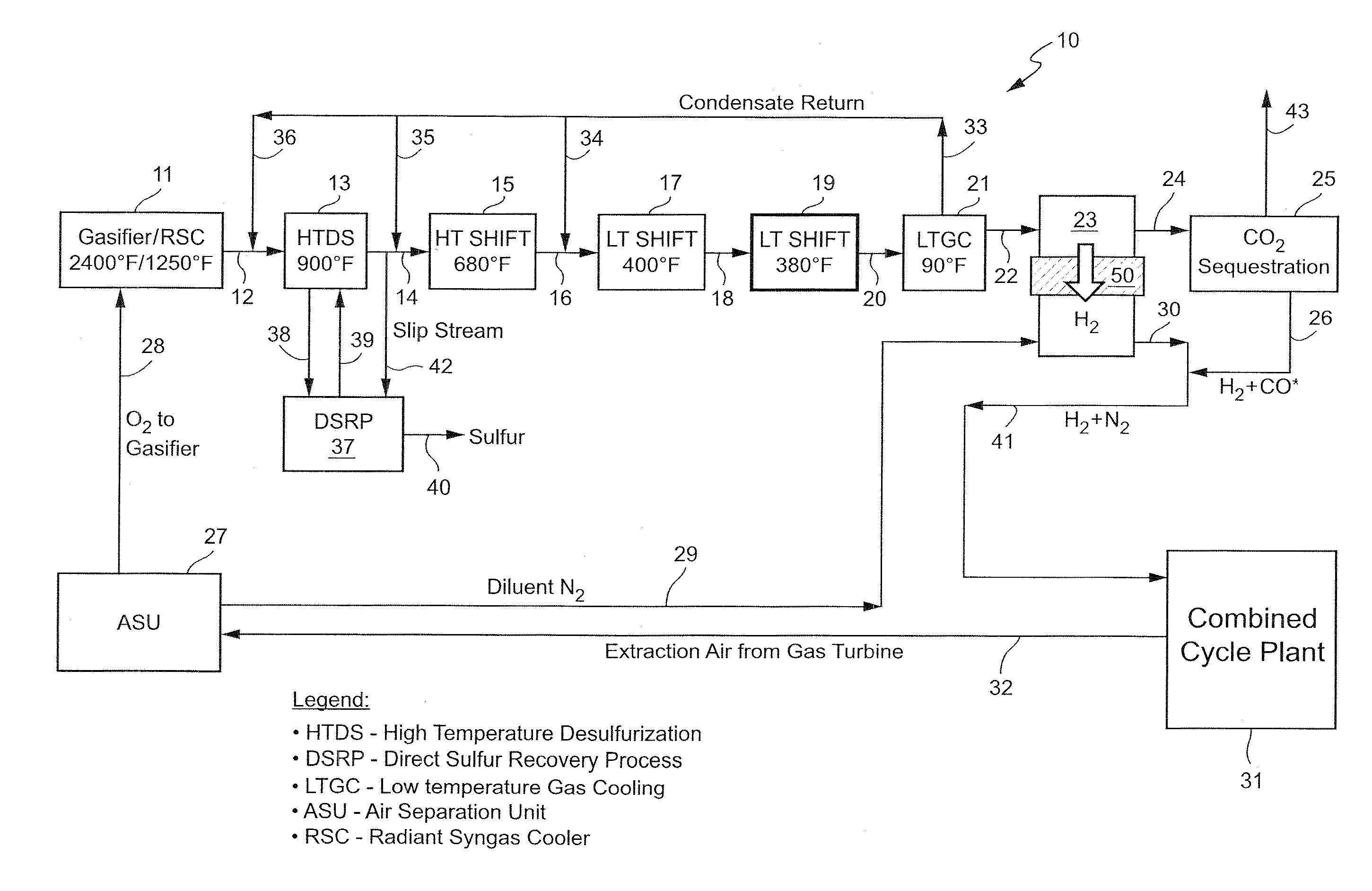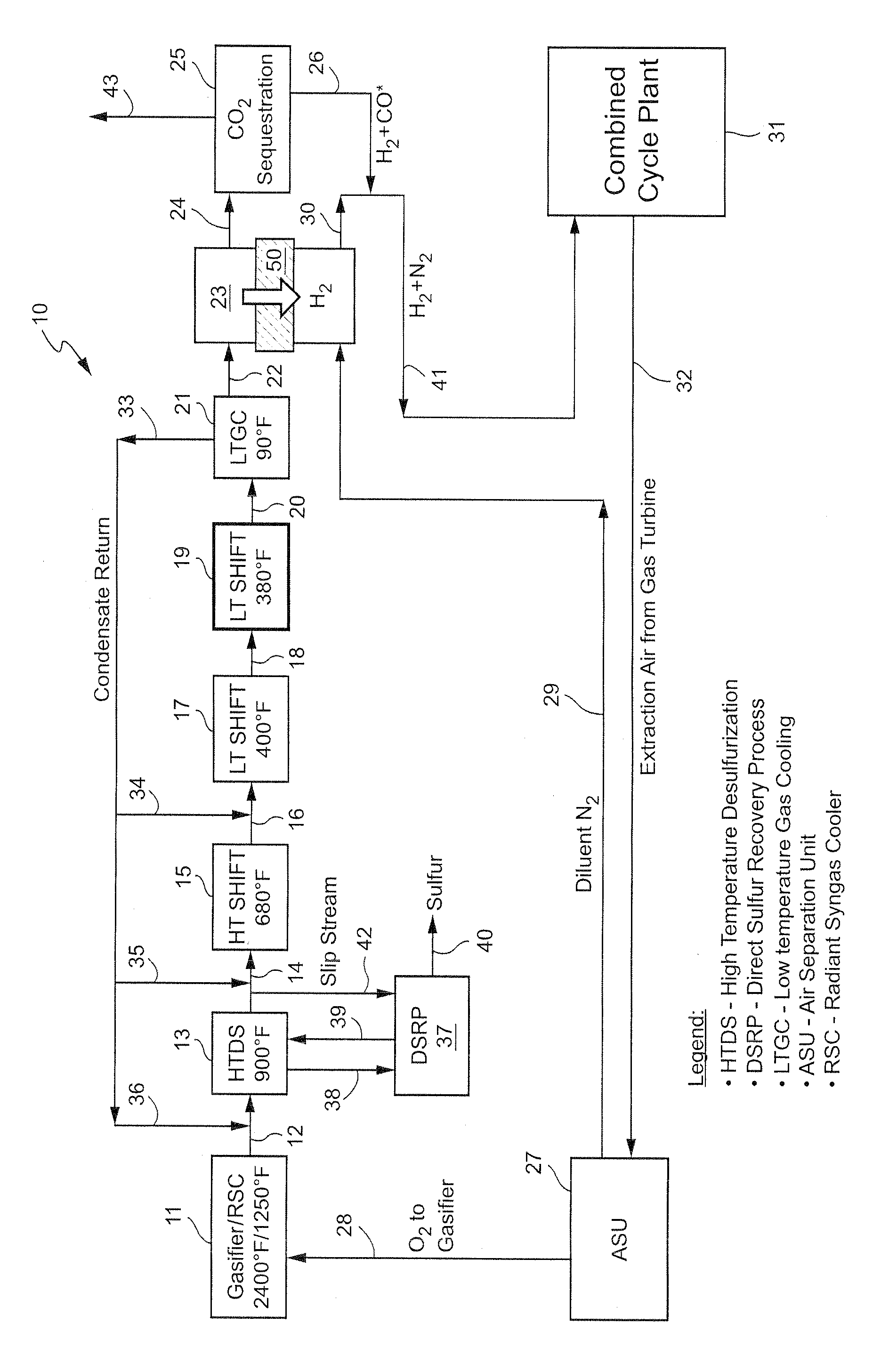Sytems and method for CO2 capture and H2 separation with three water-gas shift reactions and warm desulfurization
a technology of cosub>2 and hsub>2, which is applied in the direction of combustible gas catalytic treatment, combustible gas purification/modification, sustainable manufacturing/processing, etc., can solve the problems of complex pollution control problems, reduce the thermal value of syngas, and reduce the efficiency of combined cycle plants
- Summary
- Abstract
- Description
- Claims
- Application Information
AI Technical Summary
Benefits of technology
Problems solved by technology
Method used
Image
Examples
Embodiment Construction
[0013]As noted, the present invention provides a new, and more cost effective, method for removing sulfur compounds and CO from a syngas feed without requiring any use of a conventional solvent-based acid gas removal (“AGR”) subsystem as part of the process. In order to achieve that objective, the invention relies for the first time on the combination of a high temperature desulfurization step and a plurality of water-gas shift reactions and related heat generation steps. The end result is the removal of all residual sulfur and a complete (almost 100% conversion) shift of the CO resident in the syngas to CO2, thereby completely eliminating the need for any solvent-based process such as Selexol. The process also results in the virtual elimination of CO in the syngas feed without any need for a catalytic converter to handle any residual CO left in the exhaust, again unlike Selexol or other known prior art processes. The new system also effectively isolates and separates any hydrogen p...
PUM
| Property | Measurement | Unit |
|---|---|---|
| temperature | aaaaa | aaaaa |
| temperature | aaaaa | aaaaa |
| temperature | aaaaa | aaaaa |
Abstract
Description
Claims
Application Information
 Login to View More
Login to View More - R&D
- Intellectual Property
- Life Sciences
- Materials
- Tech Scout
- Unparalleled Data Quality
- Higher Quality Content
- 60% Fewer Hallucinations
Browse by: Latest US Patents, China's latest patents, Technical Efficacy Thesaurus, Application Domain, Technology Topic, Popular Technical Reports.
© 2025 PatSnap. All rights reserved.Legal|Privacy policy|Modern Slavery Act Transparency Statement|Sitemap|About US| Contact US: help@patsnap.com


